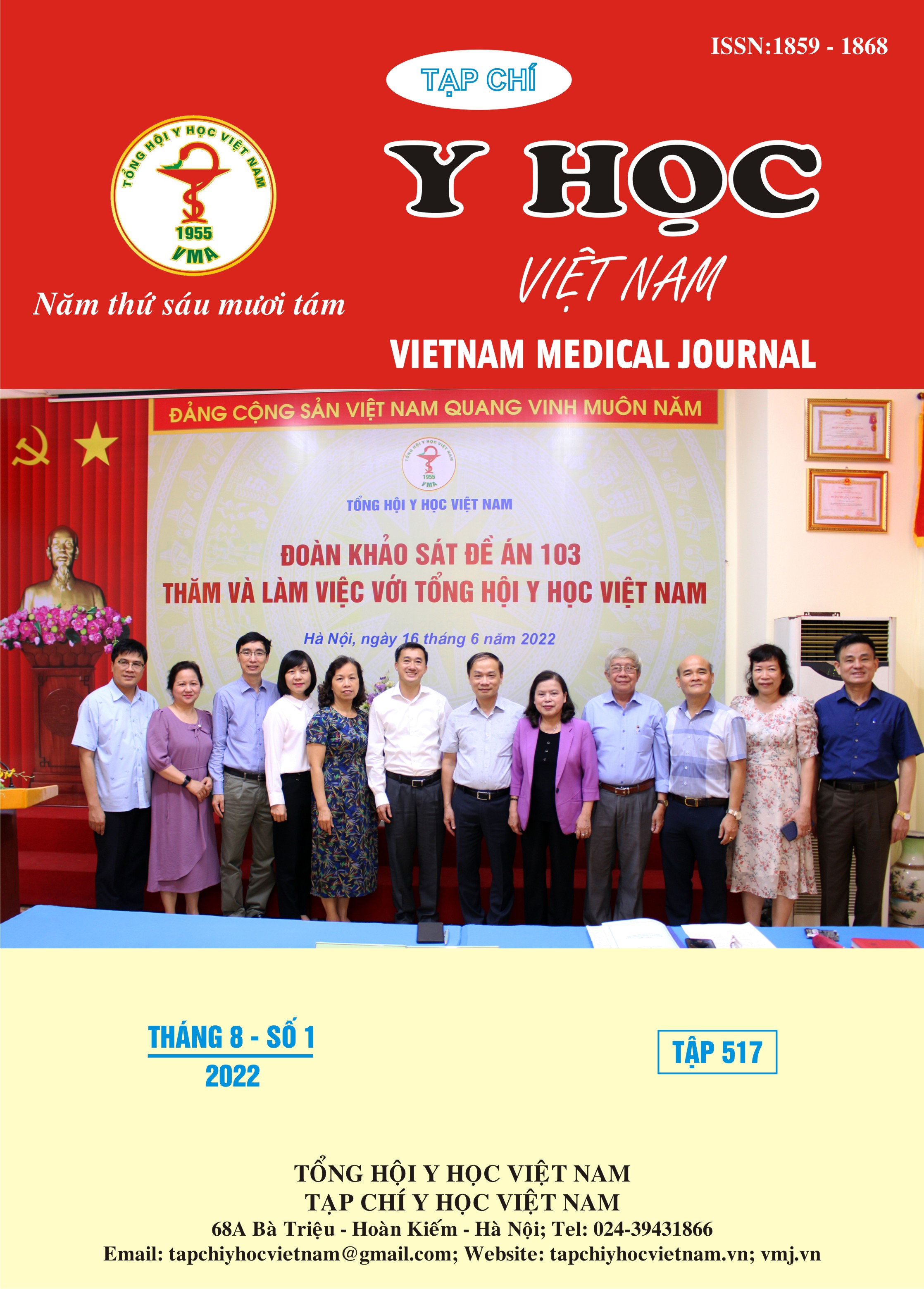THE CLINICAL AND X-RAY CHARACTERISTICS AND RESULT OF OSTEOSYNTHESIS SURGERY OF MANDIBULAR ANGLE FRACTURES AT VIET DUC UNIVERSITY HOSPITAL
Main Article Content
Abstract
Objectives: To describe the clinical and x-ray characteristics of patients with mandibular angle fractures undergoing osteosynthesis surgery at Viet Duc Hospital in Hanoi in 2021-2022 and review the treatment results of the above group of patients after 7 days. Subjects and methods: The study was conducted on maxillofacial trauma patients with mandibular angle fracture who were examined and treated with osteosynthesis surgery at the Department of Plastic and Maxillofacial Surgery, Viet Duc Hospital. Cross-sectional descriptive study, prospective subjects. Results: The Male/Female ratio is 4/1. The common age group is 19 - 39 years old, accounting for 58.67%. Traffic accidents account for 85.34%. The most common symptoms are Common clinical symptoms in mandibular angle fracture are sharp pain (90.67%), bite misalignment (97.33%), limited mouth opening (93.33%), swollen angle area (90,67)%). The proportion of patients having good contact point (points of 3 areas) accounted for 98.67%. Conclusion: Fracture of the mandibular angle mainly occurs in men, the common age is 19 - 39 years old. The main cause of trauma is traffic accidents and the vehicle that causes the accident is mostly motorcycles. Mandibular angle fractures are usually a combined fracture, mainly a combination fracture with other fracture lines of the mandible. The most common symptoms in mandibular angle fracture are sharp pain, bite misalignment, limited mouth opening, swollen in angle area. Most patients had good contact points.
Article Details
Keywords
mandibular angle fracture, Viet Duc hospital
References
2. Bộ môn Phẫu thuật tạo hình, Trường Đại học Y Hà Nội. Chấn thương vùng hàm mặt. Hà Nội 2000.
3. Fox AJ, Kellman RM. Mandibular angle fractures: two-miniplate fixation and complications. Arch Facial Plast Surg. 2003;5(6):464-469. doi:10.1001/archfaci.5.6.464
4. Phạm Văn Liệu. Đặc điểm dịch tễ học gãy XHD và so sánh hai phương pháp điều trị gãy góc hàm [Luận án Tiến sĩ Y học], Trường Đại học Y Dược Thành phố Hồ Chí Minh; 2008.
5. Razukevicius D, Sabalys G, Kubilius R. Comparative analysis of the effectiveness of the mandibular angle fracture treatment methods. Stomatologija. 2005;7(2):35-39.
6. Paza AO, Abuabara A, Passeri LA. Analysis of 115 mandibular angle fractures. J Oral Maxillofac Surg. 2008;66(1):73-76. doi:10.1016/j.joms.2007.05.025
7. Rai B, Dhattarwal SK, Jain R, Kangra V, Anand SC, Bhardawaj DN. Road Traffic Accidents: Site Of Fracture Of The Mandible. The Internet Journal of Epidemiology. 2006;4(2).
8. Jose E Barrera, Stephen G Batuello, Head and Neck Surgery, Stanford University. Mandibular angle fractures, U.S.A 2007
9. Edward W Chang, Samuel M Lam, Edward Farrior, Facial Plastic Surgery Education, Department of Otolaryngology - Head and Neck Surgery, Columbia University Medical Center. Mandible Fractures, General Principles and Occlusion.USA 2005.


